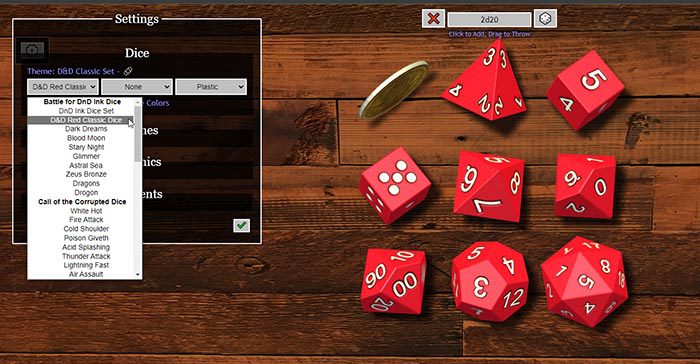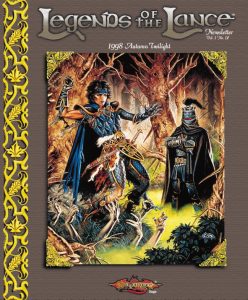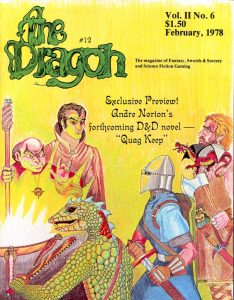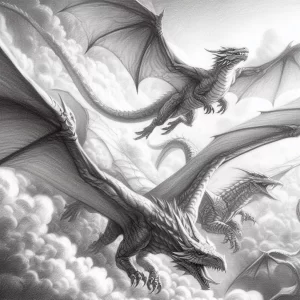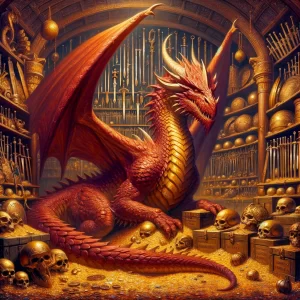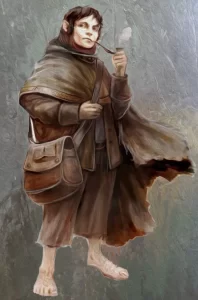
D&D Virtual 3D Dice
In the world of tabletop role-playing games (RPGs), dice are not merely tools for determining outcomes - they are an integral part of the gaming experience. The tactile feel of a die in your hand, the suspenseful moment it rattles across the table, the anticipation before it settles into a result - these are sensations that tabletop gamers across the world know and love.
However, as technology has evolved, so too has the medium for our beloved hobby. Virtual tabletops (VTTs) have brought RPGs into the digital realm, enabling players to connect from anywhere in the world and explore fantastical realms in their collective imagination. These platforms provide digital tools to emulate the tabletop experience, from maps and miniatures to rulebook references and, of course, dice.
This brings us to the concept of 3D dice in VTTs. These are digital representations of the physical dice we use in RPGs, designed to bring the same tactile and visual thrill to the virtual tabletop. Whether you're rolling a simple six-sided die (d6) in a game of Monopoly or a twenty-sided die (d20) in a tense Dungeons & Dragons battle, these 3D dice aim to capture the essence of the roll in an immersive and visually engaging way.
Many VTT platforms, such as Roll20, Tabletop Simulator, and Fantasy Grounds, offer 3D dice as a feature. When you select an action that requires a roll, these platforms don't just generate a number - they animate a die rolling across the virtual tabletop, complete with dynamic shadows, reflections, and sometimes even sound effects. You watch the die tumble and spin before it comes to rest, revealing your result just as it would in a physical game.
3D dice serve a dual purpose in virtual tabletop gaming. Firstly, they replicate the sensory experience of rolling physical dice. The roll of a die is a ritual, a moment of suspense that holds gamers in thrall. The animation of 3D dice is designed to capture this sense of anticipation and relief or despair when the result is revealed. It's a way of preserving the physicality of tabletop gaming in a digital environment.
Visual Immersion
Secondly, 3D dice enhance the visual appeal and immersive quality of the virtual tabletop. Like the detailed artwork of a game board or the intricate design of a miniature, the aesthetic of 3D dice contributes to the atmosphere of the gaming experience. The flash of a die across the screen, the gleam of its polished surface, the weighty thud as it settles - these are subtle elements that draw players into the game world.
Using 3D dice in a virtual tabletop platform is typically straightforward. The interface usually includes a selection of dice that you can choose to roll, either by clicking on them or using a hotkey. In many systems, you can combine dice of different types in a single roll, such as rolling a d20 and a d6 together in D&D for an attack roll and damage roll. The system then generates and animates the dice based on the inherent probabilities of their physical counterparts, ensuring a fair and accurate result.
Most platforms also allow you to customize your 3D dice, enabling you to choose different colors, materials, or designs to match your character or your mood. You can have dice that glimmer like gemstones, dice that shimmer with enchanting iridescence, or even dice that glow ominously with internal fire. Some platforms even allow you to import custom models, enabling you to create truly unique 3D dice.
3D dice also serve a practical purpose in virtual tabletop gaming. They provide a visual confirmation of a roll, allowing all players to see the result in real time. This helps maintain the transparency and fairness of the game, just as physical dice do on a traditional tabletop.
Infusion of Tradition
Despite the advantages of 3D dice, it's essential to remember that they are a tool, and like any tool, they are not inherently good or bad. They can enhance the gaming experience for some, adding a layer of immersion and visual appeal, while others might find them distracting or unnecessary. Some players might prefer the speed and simplicity of automatic number generation, which bypasses the dice rolling animation and presents the result instantly. Like many aspects of gaming, the use of 3D dice comes down to personal preference.
3D dice in virtual tabletops represent an innovative fusion of tradition and technology. They capture the thrill of rolling physical dice, enhance the visual and sensory appeal of the gaming experience, and provide a practical tool for fair and transparent play. As virtual tabletop gaming continues to evolve, we can expect 3D dice to become even more sophisticated, offering new ways to delight and engage players in the shared storytelling journey that lies at the heart of tabletop RPGs.
Free 3D Dice.
Pros and Cons of Digital Dice
Some websites may charge you for using their 3D virtual dice sets, for particular textures and materials, but not allowing you to personalize the dice. There is a site that offers lots of virtual 3D dice sets, each customizable, giving you over 7,000 possible dice sets to choose and/or create, at 3D Dice.
There are many pros vs cons using virtual 3D dice than traditional tabletop dice. The virtual dice are portable, you can just use your phone, no need to carry around a dice bag or dice container. With virtual dice you know the rolls are genuinely random, as there are no material deformations like in traditional dice that can give you continuous favorable or unfavorable rolls. Cost is free to use digital 3D dice as mentioned above, and only a fraction of the cost than traditional dice if you decided to pay for your virtual dice. Because of the manufacturing flaws that occur when producing physical dice, the 3D virtual dice are closer to true random outcomes than tabletop dice.
Types of Dice and Their Many Faces
Types of dice are relative to shape, and the most common ones used in role-playing games are as followed.
Tetrahedron: 4 faces
A tetrahedron is a four-faced polyhedron where each face is an equilateral triangle. In the context of gaming, especially tabletop role-playing games like Dungeons & Dragons, a tetrahedral die (often called a d4 for "four-sided die") is a four-sided die that you can roll to generate a random number between 1 and 4.
Each face of the tetrahedron is numbered, and when you roll the die, the number that lands facing up (or in some designs, at the bottom tip) is the "rolled" number. Because of its shape, a tetrahedron die doesn't roll as smoothly as other polyhedral dice, like the more commonly seen six-sided cube die (d6). It tends to tumble and quickly come to a stop.
The d4 is often used in role-playing games for various purposes, such as determining damage dealt by certain weapons, or resolving other game mechanics that require random outcomes with a small range of numbers. It's one of the standard dice types found in sets of polyhedral dice used for tabletop gaming.

Cube: 6 faces
A cube die, commonly known as a six-sided die or d6, is a cube-shaped object with each of its six faces marked with a different number of dots ranging from 1 to 6. When you roll the die, it tumbles and eventually lands with one face pointing upward. The number of dots on this upward-facing face is the "rolled" number and determines the outcome for the game mechanic in question.
The d6 is perhaps the most universally recognized type of die and is used in a wide variety of games, ranging from traditional board games like Monopoly and Yahtzee to tabletop role-playing games like Dungeons & Dragons. In the latter, the d6 may be used for a multitude of purposes, such as determining hit points, rolling for damage, or other game-specific actions.
Unlike some other types of dice, such as the tetrahedron (d4) or the icosahedron (d20), the cube die rolls quite smoothly and tends to produce truly random results if rolled properly. It is often made from materials like plastic, metal, or even wood, and can come in various sizes and colors.
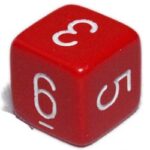
Octahedron: 8 faces
An octahedron die, commonly referred to as a d8, is an eight-sided polyhedron where each face is an equilateral triangle. Each of the eight faces is numbered from 1 to 8, and when you roll the die, the number that lands facing up is the "rolled" number used for determining a specific game outcome.
The d8 is a standard die type often found in sets of polyhedral dice, which are commonly used in tabletop role-playing games like Dungeons & Dragons. In these games, the octahedron die might be used for various functions such as determining the damage of a particular weapon, calculating healing effects, or other game mechanics that require random numbers within a moderate range.
Due to its eight faces, the octahedron die offers more potential outcomes than simpler dice like the d4 or d6 but fewer than more complex ones like the d12 or d20. It generally rolls smoothly, coming to a stop more quickly than a sphere but taking longer to settle than a d4, given its more balanced geometry.
D8 is commonly made from materials like plastic, metal, or sometimes wood, and can come in various sizes and colors to suit the player's preference.
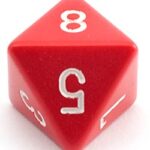
Pentagonal trapezohedron: 10 faces
A pentagonal trapezohedron die, often called a d10, is a ten-sided die that is commonly used in tabletop role-playing games like Dungeons & Dragons. Unlike regular polyhedra like the cube or octahedron, the pentagonal trapezohedron is not made of identical regular polygon faces. Instead, it features 10 faces, each of which is a kite-shaped quadrilateral (a trapezoid). These faces are arranged in two sets of five, with the sets parallel to each other.
When rolled, the number on the upward-facing face or the number aligned at the apex, depending on the design, is the "rolled" number used for gameplay. Typically, the faces are numbered from 0 to 9 or 1 to 10. Sometimes, two d10s are used together to create a "percentile die," allowing for rolls from 1 to 100 by designating one die for the tens digit and the other for the units digit.
The d10 offers more outcomes than a d6 or d8 but fewer than more complex dice like the d12 or d20. It is a standard component in sets of polyhedral dice and is used for a range of purposes in games, such as determining damage, resolving actions, or even simulating percentages when used in pairs.
D10s can be made from various materials like plastic, metal, or wood, and they come in a plethora of colors and sizes. Due to its symmetrical yet non-regular shape, a d10 rolls smoothly and provides a good distribution of random numbers.
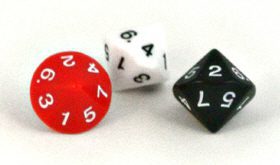
Dodecahedron: 12 faces
A dodecahedron die, commonly known as a d12, is a twelve-sided polyhedron where each face is a regular pentagon. Each of the twelve faces is numbered from 1 to 12, and when you roll the die, the number that lands facing upward is the "rolled" number used in the game. The d12 is part of the standard set of polyhedral dice commonly used in tabletop role-playing games like Dungeons & Dragons.
The d12 is used for specific purposes within such games, often for determining damage from certain types of weapons, for specific spell effects, or for other game mechanics requiring a random number within a particular range. The d12 offers more potential outcomes than simpler dice like the d6 or d8, but fewer than the more complex d20. It tends to roll smoothly and offers a good distribution of random numbers.
Like other types of polyhedral dice, the d12 can be made from various materials such as plastic, metal, or even wood, and is available in many different colors and sizes. The dodecahedron die provides a nice balance between complexity and ease of use, making it a favorite for certain specialized game mechanics.
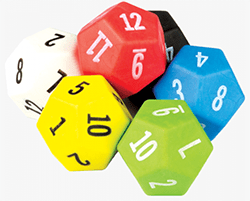
Icosahedron: 20 faces
An icosahedron die, commonly referred to as a d20, is a twenty-sided polyhedron where each face is an equilateral triangle. The faces are numbered from 1 to 20, and when you roll the die, the number that lands facing upward is the "rolled" number used to determine specific outcomes in a game. The d20 is a standard component in sets of polyhedral dice and is perhaps most famously used in tabletop role-playing games like Dungeons & Dragons.
The d20 is used for a wide variety of game mechanics, from determining the success or failure of an action to calculating damage. It's especially central to games that use the d20 System, where most actions are resolved by rolling a d20 and adding various modifiers to meet or exceed a target number. With its 20 faces, the d20 offers a broad range of potential outcomes, making it a versatile tool for introducing randomness and unpredictability into a game.
Due to its many faces and fairly spherical shape, the d20 tends to roll quite smoothly and provides a good distribution of random numbers. It's often made from various materials, such as plastic, metal, or sometimes even precious stones, and is available in many colors and sizes to suit a player's preference.
The icosahedron is one of the five Platonic solids, and its symmetry makes it well-suited for fair, random rolls. In games, the d20 can represent the capriciousness of fate itself, adding an element of suspense and unpredictability to each action.
Rolling A Natural 20 and a Natural 1
In Dungeons & Dragons, a roll of 20 on a d20 (often referred to as a "natural 20" or "nat 20") is usually considered an automatic success for most types of checks or attacks, and it often triggers a "critical hit" in combat situations. In a critical hit, you usually deal extra damage, often by rolling your damage dice multiple times and adding them together. The specifics can vary depending on the edition of D&D you're playing and any house rules you may be using, but a natural 20 is generally an occasion for celebration, representing an extraordinary feat of skill, luck, or heroism.
Conversely, a roll of 1 on a d20, commonly known as a "natural 1," is typically considered an automatic failure for most types of checks or attacks. In combat, a natural 1 could mean that your attack misses regardless of how high your bonuses might be. In some cases, Dungeon Masters may introduce additional negative consequences for a natural 1, like dropping a weapon or hitting an ally, although these are not part of the official rules and are often considered house rules.
Both natural 20s and natural 1s introduce an element of high drama and unpredictability into the game. They serve as moments that can change the tide of battle or the outcome of a critical interaction, making for memorable experiences that can be talked about long after the game session is over.
So, while the d20 is used to resolve a wide range of actions in D&D, rolling a natural 20 or a natural 1 makes the otherwise routine action suddenly become a pivotal, often game-changing, moment. These rolls are a key part of what makes the game exciting, as they introduce an element of luck and unpredictability that can either elevate or dash the characters' plans in an instant.

Want to roll over 7,000 digital dice for free, then you've come to right place, just click here Free 3D Dice.
